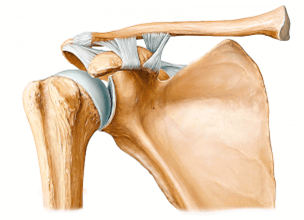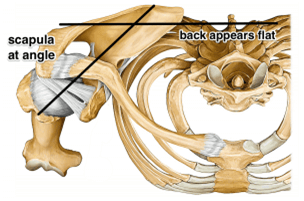In this second of 8 articles breaking down the sun salutations we look at the anatomy of raising your arms overhead. Is there a right and wrong way?
http://www.yoganatomy.com/sun-salutations-yoga-anatomy/ – David Keil
Sun Salutations – Part 2 – Arms Up!
The last article in this series was the introduction to the sun salutations series with an anatomical spin. In this article we will be exploring: How to lift the arms over your head.
Raising the Arms
It seems as though I have seen hundreds of variations on how students raise their arms over their head to begin a sun salutation. Although it’s a seemingly simple act, it’s not really. I don’t want to get really nerdy and say how amazing the coordination is at the neuromuscular level, but that is the case. We take for granted that if we are not consciously choosing to create the neuromuscular patterns, the body just does whatever it needs to, to reach the intended goal but the body isn’t always so good at choosing the best neuromuscular pattern for the long-term.

THE THREE BONES OF THE SHOULDER COMPLEX – HUMERUS, SCAPULA, CLAVICLE.
What makes raising the arms over the head so complex is what we refer to as the shoulder complex. This is the coming together of the scapula (shoulder blade), clavicle (collar bone), and the humerus (upper arm bone). Because three bones come together and the scapula is generally quite mobile, the movements themselves get mixed together.
If you know me well, you know I’m not here to tell you the “right” way to raise your arms over your head. What is the right way to raise your arms over your head? Well, it’s the one that gets your hands to their desired destination effectively and efficiently. The destination? Well, most traditionally it’s with the palms together somewhere above the head. However, it is totally acceptable to keep the hands apart in many methods.
I have seen many variations of arms raised overhead at the beginning of a sun salutation. They include, but are not limited to:
Arms out to the side
Arms lifting at a 45 degree angle (Personal Choice Award)
Palms together and raised in front
Palms together hands go up the front line of the body as in prayer position
Arms rigid
Arms relaxed
Hands together at the top
Hands apart at the top
What Problems Arise
The problems that I see most commonly are probably the same ones you do.
Elbows cannot straighten
Shoulders creep up toward the ears
Hands cannot touch one another (assuming your method tries to do this.)
Here’s how I work with the movement of raising the arms overhead when doing a sun salutation.
Personally, I go with the most relaxed way of raising the arms and I rationalize it as a more natural way of raising your arms over your head. The rationalization is based on my own desire to conserve energy. In other words, I want to move in an efficient way that does not engage muscles that have no need to engage. I also see this as an opportunity to use muscles that I will need for similar movements later on.
Take a look at the anatomy of the shoulder girdle in the image below. You’ll see that the scapula is sitting at roughly a forty-five degree angle on your back. Your scapulae don’t sit flat on your back. Remember, the rib cage is round! I know it seems like the scapula are flat on your back, but they’re not. This is important because it means that the head of your humerus is not pointing out to the side either but instead pointing more forward.

SHOULDER FROM ABOVE
This means that the least amount of effort is needed to raise your arms when you raise them at a forty-five degree angle away from your body. If you were to do this there would be no need for your scapulae to move backward and toward each other which we call retraction of the scapulae.
To make as much space in the shoulder joint itself, we also want to externally rotate the humerus as the arms go up. Because of the shape of the head of the humerus and the shelf that sticks out over it (acromion process), external rotation allows the humerus to move a little bit further before hitting the scapula. Keep in mind that any time you raise your arms over your head, your humerus has hit the acromion process. This is normal, and when it does hit your acromion, it sets the scapula in motion in what we call, upward rotation of the scapula.
External rotation is also an important part of being able to have the arms by the sides of the ears if you want to. It’s also possible that scapular movement can prevent this, but the external rotation itself usually helps create another important movement at the scapula. That movement is called protraction of the scapula. This brings in our good friend serratus anterior which is both a protractor and upward rotator of the scapula. For some students, exaggerating the external rotation and protracting the scapula makes the difference between having the hands together or apart.
Comparison of Scapular Movements – see the video here
Conclusion
Would I go as far as saying this is THE RIGHT way of doing it? No, you can express raising your arms over your head any way you like. As you’ll see as this series on sun salutations continues, I will be hitting on this same exact movement in some other key places that will help it make sense in the bigger picture of the sun salutations and beyond!

